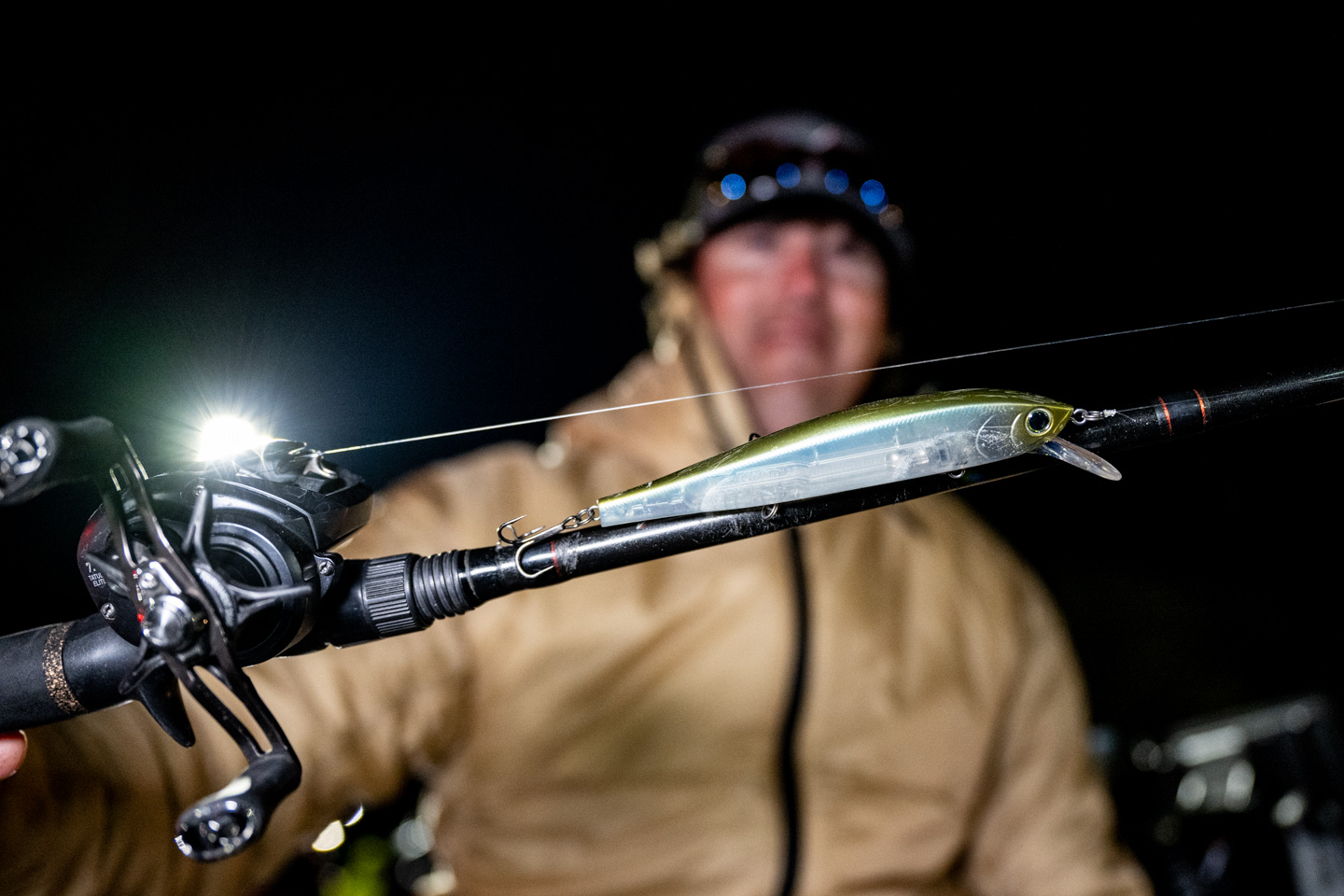
It’s the ultimate fishing fan experience, but the Bassmaster Classic also presents an unmatched learning opportunity. For anglers of all experience level, the vast media coverage offers a wealth of education by showcasing the competitors’ tools, tactics, and game plans.
This annual contest for the coveted Ray Scott trophy assembles top performers from across Bassmaster tournament circuits, so the knowledge, experience, and strategy never fails to impress. This year offered an exceptional display of old-school shallow water tactics with a good blend of modern sonar elements.
We’ve curated a handful of key points that will help aspiring bass anglers understand some of the principles and practices utilized on Grand Lake O’ the Cherokees.
For starters, Classic winner Justin Hamner’s performance has been well covered, but one facet of his game merits a mention here. The fourth-year Elite pro from Northport, Ala. caught most of his fish on a jerkbait. A realistic threadfin shad imitator, this lure’s ability to twitch, pause, and mimic a vulnerable baitfish gets the bites — especially in the springtime.
Jerkbaits are rated for certain depths, based on body design and, most importantly, bill size. However, when Hamner determined that his preferred bait style was not reaching deeply enough, he replaced the stock hooks with No. 6 Duo Realis treble hooks, which increased his bait’s depth with their heavy wire design.
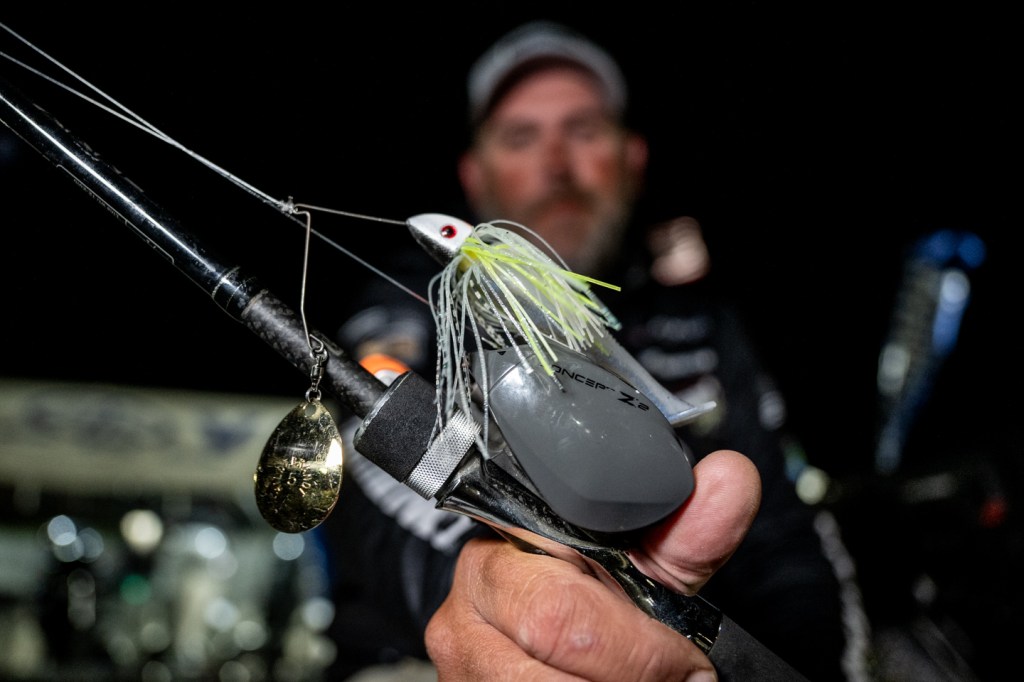
Attention Getter
Second-place finisher Adam Rasmussen did much of his work with a spinnerbait. This lure category presents a large profile with constant action from the pulsating skirt, plus the flash and vibration of one or more blades.
Rasmussen used a 1/2-ounce Bassman spinnerbait with a single Colorado style blade. Anglers have a handful of blade shapes as their disposal, but the most common choices are the long, slender willow-leaf and the short, round Colorado. The former creates more flash with less with water drag, while the latter emits heavy thumping vibration that slows the bait.
“The water wasn’t really stained (on Grand Lake), but it still had some color,” Rasmussen said. “You’d want to fish a double willow-leaf or a Colorado/willow-leaf combo if you’re fishing clean water and you want to reel faster and get a reaction bite.
“In colder water, dirtier water; springtime is probably time for a No. 5 or a No. 6 Colorado blade. I like a spinnerbait with this blade and a Rapala Crush City Mayor swimbait trailer so the fish can feel it and find it.”
Noting that he fished his spinnerbait slow and lower in the water column, Rasmussen said: “When the fish are not super aggressive, you just reel your spinnerbait close to the bottom, let it bang off the rocks, wood, and whatever structure is down there.
“Usually, when that spinnerbait hits something, and it disturbs the action of the bait, that’s when you’re going to get a reaction bite.”
Tip: In particularly dirty and/or cold water, anglers often use a red or orange “kicker” blade to give bass an easier target to locate.
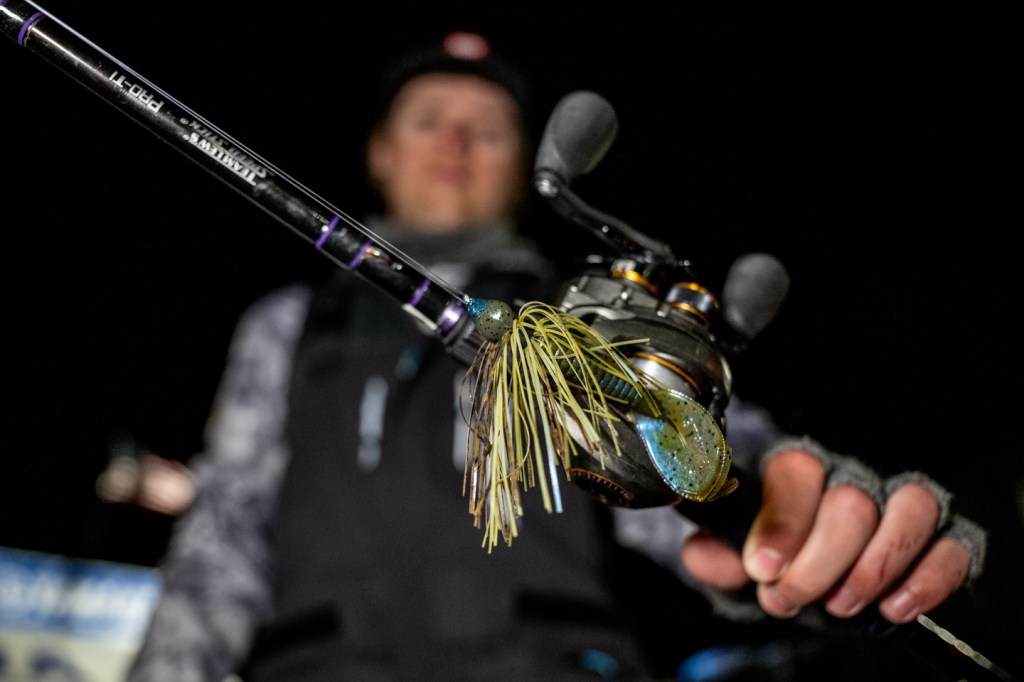
Adjust with Weather
The 2024 saw a diverse weather complexion with rain, sun, clouds, and wind. Possibly the most impactful was the second day’s significant dip in air temperatures.
Przekurat reported a 5-degree drop in the area he was fishing and other top finishers likely experienced similar changes. As cold-blooded creatures, bass clearly react to temperature variances. Fishermen must take this into consideration, as evidenced during the Classic competition.
“When the sun would come out and the wind (was flat), the fish would move up shallower,” Rasmussen said. “When we had the clouds and wind, I had to slide out to locate them in a little deeper water. I was constantly moving in and out until I got a couple of bites and then I’d concentrate in that depth range and run it all over the lake.”
Wind also impacted the Classic, as Day 1 saw nearly glassy calm conditions. Day 2 brought a 10-12 knot northeast wind, followed by a much stronger southerly blow on Championship Sunday.
Anglers often say “wind is your friend,” because a manageable level of wave action moves baitfish around, obscures visibility, and makes predators more active. However, too much of a good thing and… ya know.
While the third day’s wind was not as fierce as forecast, it still impacted the fishery. After the Day-2 weigh-ins, Huff noted that he intentionally avoided some of his better spots, in favor of fishing his more exposed areas. He saved some of his leeward waters for the final round, when those protected areas would prove most valuable.
Likewise, eighth-place Hank Cherry, who won the 2020 and 2021 Classics, noted that he gave no thought to the final-round forecast. Cherry committed his event to fishing docks and rock banks in the backs of drains, where high, steep banks kept him shielded.
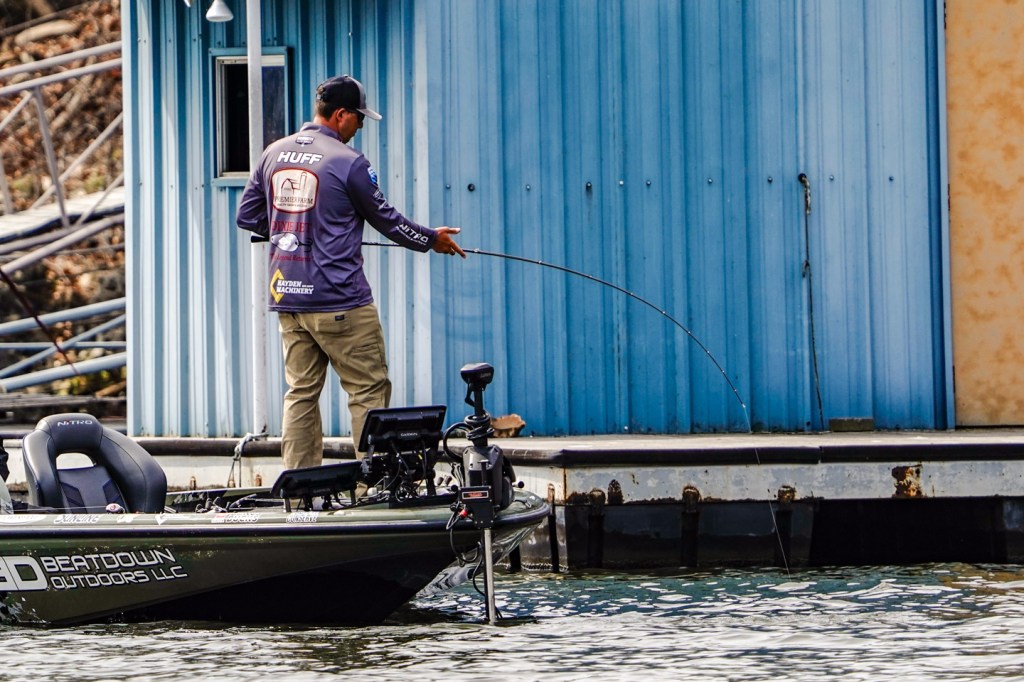
Roundup
Here are a few more insightful points from Bassmaster Classic anglers.
Gear Up: When Huff targeted boat docks, he found most of his fish on the back sides, between the dock and the rock bank. Bass tend to favor this secluded sanctuary during the spring spawning season, but accessing these fish can prove challenging.
Using a sidearm motion to skip baits into the target zone allows anglers to reach beyond walkways and dock cables; however, it’s often necessary to cast over significant barriers (those walkways and other dock elements.
Most experienced dock anglers say they focus on getting the bite and then worrying about fish extraction. Makes sense, but as Huff explained, forethought and preparation facilitates the task of hoisting a hooked fish over the obstruction.
“You gotta have the right rod, reel and line setup,” Huff said. “If you have a rod that’s too stiff, you’re going to break them off. You want a rod with a little tip (flexibility) and I match that up with 22-pound Sun-Line fluorocarbon.”
Huff did his heavy dock work with a 7-4 heavy Bass Pro Shops Carbon Lite rod with an 8.3:1 Bass Pro Shops Johnny Morris Platinum Series reel.
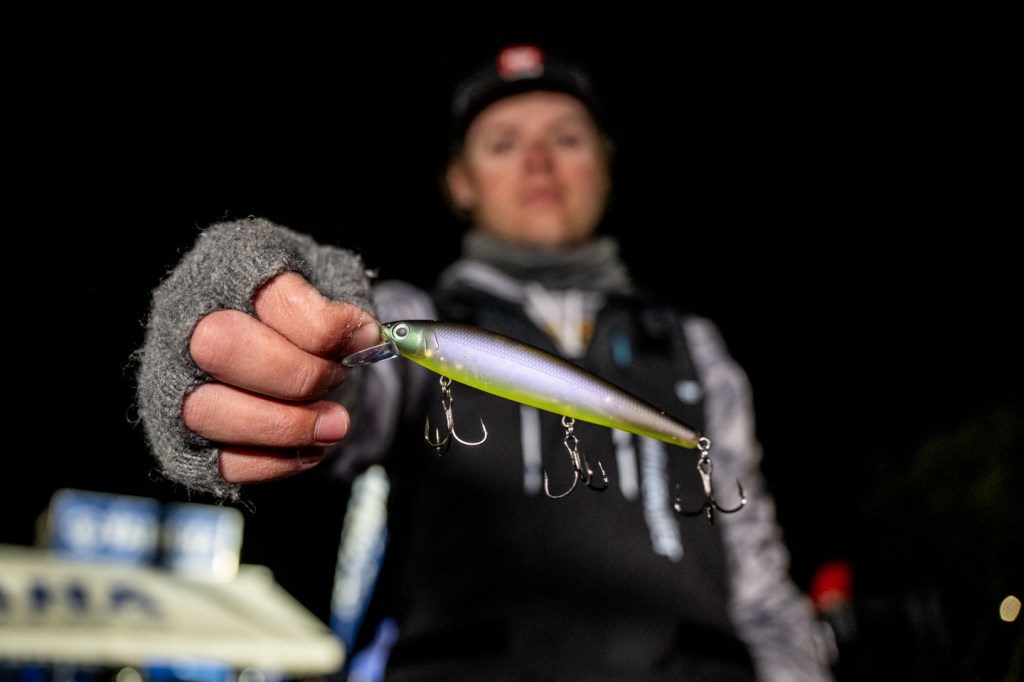
“Weight” a Minute: Jay Przekurat, the 2022 Bassmaster Elite Series Rookie of the Year also caught keepers on a jerkbait, but he switched to a jig midway through Day 2 and stuck with that presentation ’til the end. While a 1/2-ounce jig is usually the common choice for its accuracy and faster fall, Przekurat said his choice of the 3/8-ounce Strike King Structure Jig with a Strike King Menace trailer offers a user-friendly bait.
“It’s really easy to throw on a 7-foot, medium-heavy — baitcasting or spinning — rod with 15- to 17-pound fluorocarbon,” Przekurat said. “Just dragging that bait slowly on the bottom around chunk rock; it just gets bit. Lighter is better, in my opinion.”
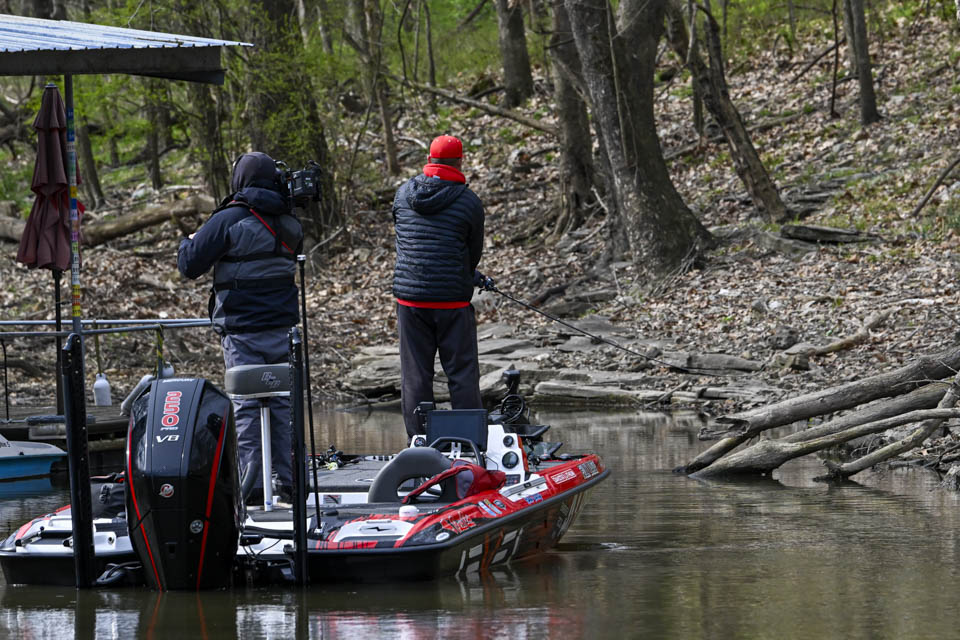
Rock On: On Day 1, Cherry fared well by lightly swimming a jig along flats with a mix of pebble and softball size rocks. During the second day’s colder conditions, he switched to a Chatterbait. As Cherry explained, dark rocks hold more heat, so he had to fish where the fish were, but do so efficiently.“The cold put the fish tighter to the rocks on a steep bank,” Cherry said. “It was easier to pull that Chatterbait down the rocks than hop that jig along the rocks.”





